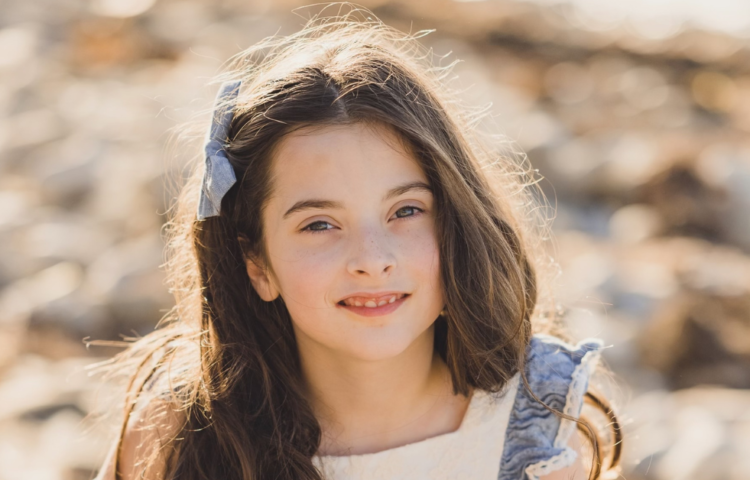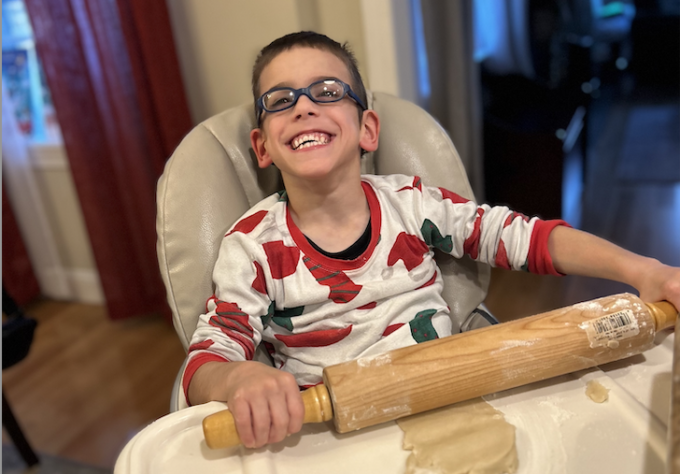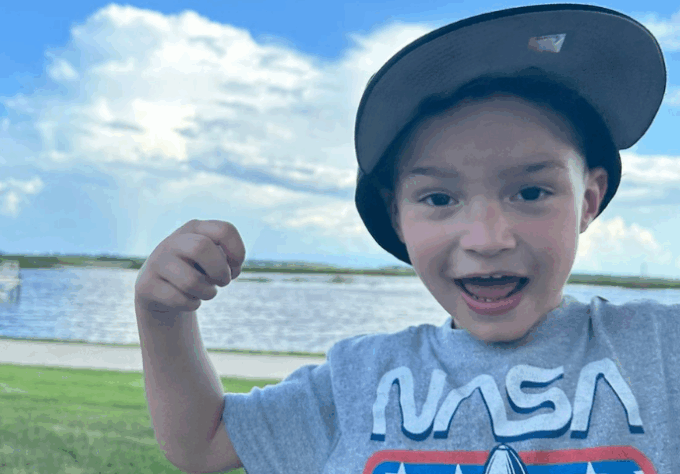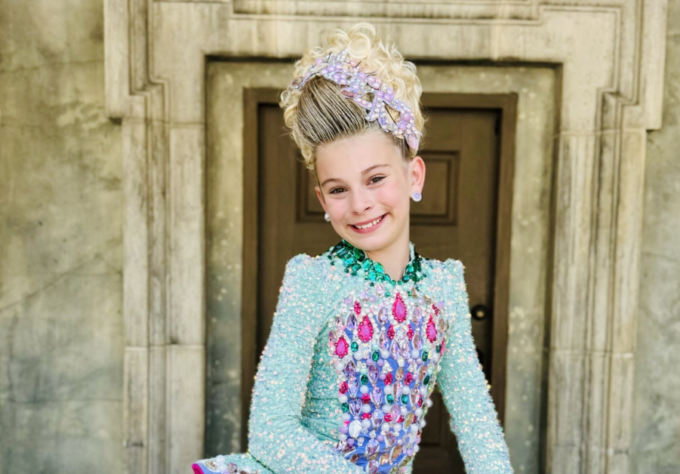Annika’s path to a cerebral palsy diagnosis began at a young age. Born prematurely at 29 weeks and five days, Annika’s mother, Jessica, noticed subtle differences in her development around six months. When Annika’s twin began reaching certain milestones, such as rolling over, ahead of her, Annika’s family became concerned.
“That was my first clue that something was not exactly typical,” says Jessica. “I mentioned it to her local pediatrician; however, Annika did a lot of other things typical and well, so she didn’t seem worried. I just knew deep down that something was off, and asked if, based on her prematurity, she could qualify for early childhood physical therapy. Annika began her first physical therapy when she was 7 months old.” Jessica’s persistence led Annika to early intervention therapies, and when Annika was 11 months old, she asked that the pediatrician refer her to a local pediatric neurologist.

Despite initial reassurances from the first the pediatrician and then the neurologist, Jessica’s intuition urged her to seek a second opinion. “I was sick to my stomach after that first neurology appointment, because I just knew in my heart something was off, and no one else seemed to notice.” says Jessica. After multiple tests and assessments, Annika finally received a diagnosis of cerebral palsy, right before her 2nd birthday.
The diagnosis brought a lot of emotions for Jessica and her family, as they transitioned from theoretical concerns to a tangible reality. “Once we received her diagnosis, the future we had envisioned for her was changed, and it felt so uncertain and foreign to us, which perpetuated our fear and grief.”
Determined to provide Annika with the best possible future, Jessica immersed herself in research and pursued numerous therapeutic interventions. The family explored all kinds of traditional and alternative therapies. “In the early years, I felt like I was trying to do all the things, anything that I could do,” says Jessica. “At 2 years old, I didn’t know what her CP was going to look like as she grew up. I didn’t know what it would mean for her future, or even my own, and I wanted to try to do anything that might make her more independent and autonomous.

At age 6, Annika was told that she would need surgery for her hips; however, Annika’s family didn’t feel comfortable with doing a surgery at such a young age. “At the time, she was making so many mobility gains,” says Jessica. “She had gone from walking with a walker, to walking with crutches, to even taking independent steps all in that year.”
“Her local doctors told me she needed a hip surgery for a potential issue when she’s 20,” says Jessica. “And to prevent that, you want me to take her off her feet at 6 years old when she is making gains? The surgery would put her in the bed for two months, and set her back at least a year, and likely longer. I just thought it was insane, so, we decided to wait. That basically led us to do a “tour” of all the best orthopedic surgeons in various pediatric hospitals across the U.S. to find out our other options. I went to see so many, it’s almost embarrassing, but, I was not going to go into this surgery lightly. It’s my daughter, her future, and my own, and I wanted to make sure I was comfortable with who was going operate on her.”
As a nurse anesthetist, Jessica is familiar with the medical world. She went to see many of the great surgeons she had heard of in hopes of finding a better alternative for her daughter. After a visit with an orthopedic surgeon at another organization, Dr. Wade Shrader at Nemours Children’s Health was recommended to her. “The other surgeon told me that he believed that Annika needed the surgery,” says Jessica. “And so I said the same thing I had said to everyone, and asked him how he could justify doing a preventative surgery that in itself would also cause much pain and challenges. The surgeon said that he could hear and understand my reservations, and that if he was me, that he would consider taking Annika to see this doctor at Nemours in Delaware. He described Dr. Shrader as someone who has dedicated his entire career to studying orthopedics, specifically in children with CP. And because he is a father of two children with cerebral palsy, he not only comes to the surgery with the understanding of a surgeon, but he’s also been on the parent’s side of it, and can walk with his patients and their parents through the parent’s fears more easily. It was that knowledge that made us want to schedule an appointment to see Dr. Shrader.”
After making the journey from Tennessee to Delaware, the pivotal factor in deciding on Nemours Children’s for Annika’s surgery was Nemours’ commitment to swift rehabilitation, addressing Jessica’s concerns about long periods of immobility post-surgery. “It was comforting and encouraging to think, ‘OK, she’s not going to just lay in the bed for a month.’ I knew Dr. Shrader was an excellent surgeon, but it was the combination of good surgeon plus good therapy and good team that made our choice of Nemours easy.”

Annika, at the age of 8, embarked on her treatment journey with Nemours Children’s. Based on her X-rays and her gait analysis, Dr. Shrader recommended surgery followed by an aggressive in-house rehabilitation therapy plan. The family continued traditional therapies, to get Annika as strong as they could before ultimately proceeding with surgery in January 2024.
Recovery has been challenging, with Annika facing initial pain and the need to relearn many skills. “She was learning to go upstairs pretty well and walking independently in the house,” says Jessica. “And now she’s back to trying to relearn how to stand.” However, Nemours’ approach to rehabilitation has provided her with post-surgery support beyond physical therapy.
“I feel that Nemours has curated an ‘after surgery experience’,” says Jessica. “They have her doing rehab, which is obviously so important, but they also have on staff professional teachers to help with her school; they have art therapy, music therapy, group (psyche/counseling) therapy, massage, and the list goes on! They come in during the week with psych to sit and chat with her about how much she misses her sisters and school. It’s been really holistic and well-rounded. It’s not just been about helping her recover from the surgery or solely focus on her physical therapy, but they seem to understand that a long in-patient status and a huge surgery like this affects her heart and mind and they are treating all of her needs. Her care team addresses issues like, ‘How can we help her to relax? How can we get her to have fun? How do we help her to grieve? How can we help her mental state? How can we help her be aggressive with her physical therapy? How can we get her out and moving and make it fun?’ I think it’s the way a hospital experience should be.”
Currently, Annika is immersed in a multi-faceted rehabilitation program at the hospital. In total, she will be there for around three months. Afterwards, her family plans to continue consultations with Dr. Shrader to monitor Annika’s progress as well as physical medicine rehabilitation with the Nemours team.
Jessica is optimistic about Annika’s future, emphasizing her daughter’s unique qualities and resilient spirit. “In some ways, having a child with cerebral palsy is just as hard as I imagined,” says Jessica. “But in other ways, I see how it has changed our family and brought much beauty. I wish that I could have seen, in those early years, how great she was going to do. I think it would have given me some peace.”

“I think kids with special needs can be forced to understand concepts and perspectives much earlier in life than other typical-developing kids usually do. Annika understands things on a level that is often adult-like: like what is worth crying about and what is worth being disappointed about. Also, because she’s had to give up things, such as missing her third-grade spring semester right now, she’s learned well how to comprehend the disappointments that come to all of us in life.”
“But, in other ways, she’s just a regular kid. She’s super smart, she’s creative, she’s bilingual, and she’s trying to learn a third language. She has three sisters that she adores, but like any sibling group, they play and fight, they tell secrets. They are her very best friends. Her sisters treat her “normally.” They don’t give her a break and that’s good. I like that because I want her to experience that. Annika’s also made a few friends that are real, true friends recently. Annika says, ‘What I love about these friends is that they don’t coddle me.’ I think one of her frustrations a lot of times is that people are nice, but it’s often in a belittling way. People are always nice to her, but at the same time, they are often too easy on her, while keeping their distance. They let her win the games, and don’t generally confide in her, much the way you might treat a child younger than yourself. She notices this, and it bothers her. She has the good fortune of having her sisters who I think she has created a special relationship with. But having these new friends who are mature enough to not treat her any different, has been a new kind of experience, it’s been excellent. But that’s always the challenge for her: trying to find a way that she can be treated respectfully because of her disability, yet normally. There’s a fine balance. Yes, people recognize that she’s disabled, and she can’t always keep up, but you also want people to treat her like she can.” Reflecting on her experience, Jessica offers advice to parents navigating a similar journey. “The anguish over deciding to put your child through surgery is very tough,” says Jessica. “It’s hard to make decisions on it. Truthfully, if I could have avoided the surgery, I would have. But I’m hopeful that as an adult she won’t live in chronic pain the way she potentially was going to if her hips had remained out of alignment. I think that if you ever must do it, Nemours is an excellent place go. I would come back here, over and over again, for sure.”



